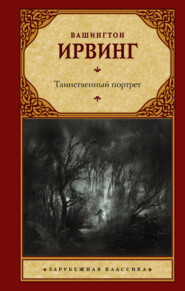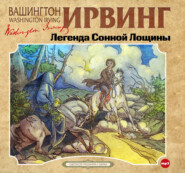По всем вопросам обращайтесь на: info@litportal.ru
(©) 2003-2025.
✖
The Adventures of Captain Bonneville, U. S. A., in the Rocky Mountains and the Far West
Настройки чтения
Размер шрифта
Высота строк
Поля
The valley called Pierre’s Hole is about thirty miles in length and fifteen in width, bounded to the west and south by low and broken ridges, and overlooked to the east by three lofty mountains, called the three Tetons, which domineer as landmarks over a vast extent of country.
A fine stream, fed by rivulets and mountain springs, pours through the valley toward the north, dividing it into nearly equal parts. The meadows on its borders are broad and extensive, covered with willow and cotton-wood trees, so closely interlocked and matted together as to be nearly impassable.
In this valley was congregated the motley populace connected with the fur trade. Here the two rival companies had their encampments, with their retainers of all kinds: traders, trappers, hunters, and half-breeds, assembled from all quarters, awaiting their yearly supplies, and their orders to start off in new directions. Here, also, the savage tribes connected with the trade, the Nez Perces or Chopunnish Indians, and Flatheads, had pitched their lodges beside the streams, and with their squaws, awaited the distribution of goods and finery. There was, moreover, a band of fifteen free trappers, commanded by a gallant leader from Arkansas, named Sinclair, who held their encampment a little apart from the rest. Such was the wild and heterogeneous assemblage, amounting to several hundred men, civilized and savage, distributed in tents and lodges in the several camps.
The arrival of Captain Sublette with supplies put the Rocky Mountain Fur Company in full activity. The wares and merchandise were quickly opened, and as quickly disposed of to trappers and Indians; the usual excitement and revelry took place, after which all hands began to disperse to their several destinations.
On the 17th of July, a small brigade of fourteen trappers, led by Milton Sublette, brother of the captain, set out with the intention of proceeding to the southwest. They were accompanied by Sinclair and his fifteen free trappers; Wyeth, also, and his New England band of beaver hunters and salmon fishers, now dwindled down to eleven, took this opportunity to prosecute their cruise in the wilderness, accompanied with such experienced pilots. On the first day, they proceeded about eight miles to the southeast, and encamped for the night, still in the valley of Pierre’s Hole. On the following morning, just as they were raising their camp, they observed a long line of people pouring down a defile of the mountains. They at first supposed them to be Fontenelle and his party, whose arrival had been daily expected. Wyeth, however, reconnoitred them with a spy-glass, and soon perceived they were Indians. They were divided into two parties, forming, in the whole, about one hundred and fifty persons, men, women, and children. Some were on horseback, fantastically painted and arrayed, with scarlet blankets fluttering in the wind. The greater part, however, were on foot. They had perceived the trappers before they were themselves discovered, and came down yelling and whooping into the plain. On nearer approach, they were ascertained to be Blackfeet.
One of the trappers of Sublette’s brigade, a half-breed named Antoine Godin, now mounted his horse, and rode forth as if to hold a conference. He was the son of an Iroquois hunter, who had been cruelly murdered by the Blackfeet at a small stream below the mountains, which still bears his name. In company with Antoine rode forth a Flathead Indian, whose once powerful tribe had been completely broken down in their wars with the Blackfeet. Both of them, therefore, cherished the most vengeful hostility against these marauders of the mountains. The Blackfeet came to a halt. One of the chiefs advanced singly and unarmed, bearing the pipe of peace. This overture was certainly pacific; but Antoine and the Flathead were predisposed to hostility, and pretended to consider it a treacherous movement.
“Is your piece charged?” said Antoine to his red companion.
“It is.”
“Then cock it, and follow me.”
They met the Blackfoot chief half way, who extended his hand in friendship. Antoine grasped it.
“Fire!” cried he.
The Flathead levelled his piece, and brought the Blackfoot to the ground. Antoine snatched off his scarlet blanket, which was richly ornamented, and galloped off with it as a trophy to the camp, the bullets of the enemy whistling after him. The Indians immediately threw themselves into the edge of a swamp, among willows and cotton-wood trees, interwoven with vines. Here they began to fortify themselves; the women digging a trench, and throwing up a breastwork of logs and branches, deep hid in the bosom of the wood, while the warriors skirmished at the edge to keep the trappers at bay.
The latter took their station in a ravine in front, whence they kept up a scattering fire. As to Wyeth, and his little band of “downeasters,” they were perfectly astounded by this second specimen of life in the wilderness; the men, being especially unused to bushfighting and the use of the rifle, were at a loss how to proceed. Wyeth, however, acted as a skilful commander. He got all his horses into camp and secured them; then, making a breastwork of his packs of goods, he charged his men to remain in garrison, and not to stir out of their fort. For himself, he mingled with the other leaders, determined to take his share in the conflict.
In the meantime, an express had been sent off to the rendezvous for reinforcements. Captain Sublette, and his associate, Campbell, were at their camp when the express came galloping across the plain, waving his cap, and giving the alarm; “Blackfeet! Blackfeet! a fight in the upper part of the valley! – to arms! to arms!”
The alarm was passed from camp to camp. It was a common cause. Every one turned out with horse and rifle. The Nez Perces and Flatheads joined. As fast as horseman could arm and mount he galloped off; the valley was soon alive with white men and red men scouring at full speed.
Sublette ordered his men to keep to the camp, being recruits from St. Louis, and unused to Indian warfare. He and his friend Campbell prepared for action. Throwing off their coats, rolling up their sleeves, and arming themselves with pistols and rifles, they mounted their horses and dashed forward among the first. As they rode along, they made their wills in soldier-like style; each stating how his effects should be disposed of in case of his death, and appointing the other his executor.
The Blackfeet warriors had supposed the brigade of Milton Sublette all the foes they had to deal with, and were astonished to behold the whole valley suddenly swarming with horsemen, galloping to the field of action. They withdrew into their fort, which was completely hid from sight in the dark and tangled wood. Most of their women and children had retreated to the mountains. The trappers now sallied forth and approached the swamp, firing into the thickets at random; the Blackfeet had a better sight at their adversaries, who were in the open field, and a half-breed was wounded in the shoulder.
When Captain Sublette arrived, he urged to penetrate the swamp and storm the fort, but all hung back in awe of the dismal horrors of the place, and the danger of attacking such desperadoes in their savage den. The very Indian allies, though accustomed to bushfighting, regarded it as almost impenetrable, and full of frightful danger. Sublette was not to be turned from his purpose, but offered to lead the way into the swamp. Campbell stepped forward to accompany him. Before entering the perilous wood, Sublette took his brothers aside, and told them that in case he fell, Campbell, who knew his will, was to be his executor. This done, he grasped his rifle and pushed into the thickets, followed by Campbell. Sinclair, the partisan from Arkansas, was at the edge of the wood with his brother and a few of his men. Excited by the gallant example of the two friends, he pressed forward to share their dangers.
The swamp was produced by the labors of the beaver, which, by damming up a stream, had inundated a portion of the valley. The place was all overgrown with woods and thickets, so closely matted and entangled that it was impossible to see ten paces ahead, and the three associates in peril had to crawl along, one after another, making their way by putting the branches and vines aside; but doing it with caution, lest they should attract the eye of some lurking marksman. They took the lead by turns, each advancing about twenty yards at a time, and now and then hallooing to their men to follow. Some of the latter gradually entered the swamp, and followed a little distance in their rear.
They had now reached a more open part of the wood, and had glimpses of the rude fortress from between the trees. It was a mere breastwork, as we have said, of logs and branches, with blankets, buffalo robes, and the leathern covers of lodges, extended round the top as a screen. The movements of the leaders, as they groped their way, had been descried by the sharp-sighted enemy. As Sinclair, who was in the advance, was putting some branches aside, he was shot through the body. He fell on the spot. “Take me to my brother,” said he to Campbell. The latter gave him in charge to some of the men, who conveyed him out of the swamp.
Sublette now took the advance. As he was reconnoitring the fort, he perceived an Indian peeping through an aperture. In an instant his rifle was levelled and discharged, and the ball struck the savage in the eye. While he was reloading, he called to Campbell, and pointed out to him the hole; “Watch that place,” said he, “and you will soon have a fair chance for a shot.” Scarce had he uttered the words, when a ball struck him in the shoulder, and almost wheeled him around. His first thought was to take hold of his arm with his other hand, and move it up and down. He ascertained, to his satisfaction, that the bone was not broken. The next moment he was so faint that he could not stand. Campbell took him in his arms and carried him out of the thicket. The same shot that struck Sublette wounded another man in the head.
A brisk fire was now opened by the mountaineers from the wood, answered occasionally from the fort. Unluckily, the trappers and their allies, in searching for the fort, had got scattered, so that Wyeth, and a number of Nez Perces, approached the fort on the northwest side, while others did the same on the opposite quarter. A cross-fire thus took place, which occasionally did mischief to friends as well as foes. An Indian was shot down, close to Wyeth, by a ball which, he was convinced, had been sped from the rifle of a trapper on the other side of the fort.
The number of whites and their Indian allies had by this time so much increased by arrivals from the rendezvous, that the Blackfeet were completely overmatched. They kept doggedly in their fort, however, making no offer of surrender. An occasional firing into the breastwork was kept up during the day. Now and then, one of the Indian allies, in bravado, would rush up to the fort, fire over the ramparts, tear off a buffalo robe or a scarlet blanket, and return with it in triumph to his comrades. Most of the savage garrison that fell, however, were killed in the first part of the attack.
At one time it was resolved to set fire to the fort; and the squaws belonging to the allies were employed to collect combustibles. This however, was abandoned; the Nez Perces being unwilling to destroy the robes and blankets, and other spoils of the enemy, which they felt sure would fall into their hands.
The Indians, when fighting, are prone to taunt and revile each other. During one of the pauses of the battle, the voice of the Blackfeet chief was heard.
“So long,” said he, “as we had powder and ball, we fought you in the open field: when those were spent, we retreated here to die with our women and children. You may burn us in our fort; but, stay by our ashes, and you who are so hungry for fighting will soon have enough. There are four hundred lodges of our brethren at hand. They will soon be here – their arms are strong – their hearts are big – they will avenge us!”
This speech was translated two or three times by Nez Perce and creole interpreters. By the time it was rendered into English, the chief was made to say that four hundred lodges of his tribe were attacking the encampment at the other end of the valley. Every one now was for hurrying to the defence of the rendezvous. A party was left to keep watch upon the fort; the rest galloped off to the camp. As night came on, the trappers drew out of the swamp, and remained about the skirts of the wood. By morning, their companions returned from the rendezvous with the report that all was safe. As the day opened, they ventured within the swamp and approached the fort. All was silent. They advanced up to it without opposition. They entered: it had been abandoned in the night, and the Blackfeet had effected their retreat, carrying off their wounded on litters made of branches, leaving bloody traces on the herbage. The bodies of ten Indians were found within the fort; among them the one shot in the eye by Sublette. The Blackfeet afterward reported that they had lost twenty-six warriors in this battle. Thirty-two horses were likewise found killed; among them were some of those recently carried off from Sublette’s party, in the night; which showed that these were the very savages that had attacked him. They proved to be an advance party of the main body of Blackfeet, which had been upon the trail of Sublette’s party. Five white men and one halfbreed were killed, and several wounded. Seven of the Nez Perces were also killed, and six wounded. They had an old chief, who was reputed as invulnerable. In the course of the action he was hit by a spent ball, and threw up blood; but his skin was unbroken. His people were now fully convinced that he was proof against powder and ball.
A striking circumstance is related as having occurred the morning after the battle. As some of the trappers and their Indian allies were approaching the fort through the woods, they beheld an Indian woman, of noble form and features, leaning against a tree. Their surprise at her lingering here alone, to fall into the hands of her enemies, was dispelled, when they saw the corpse of a warrior at her feet. Either she was so lost in grief as not to perceive their approach; or a proud spirit kept her silent and motionless. The Indians set up a yell, on discovering her, and before the trappers could interfere, her mangled body fell upon the corpse which she had refused to abandon. We have heard this anecdote discredited by one of the leaders who had been in the battle: but the fact may have taken place without his seeing it, and been concealed from him. It is an instance of female devotion, even to the death, which we are well disposed to believe and to record.
After the battle, the brigade of Milton Sublette, together with the free trappers, and Wyeth’s New England band, remained some days at the rendezvous, to see if the main body of Blackfeet intended to make an attack; nothing of the kind occurring, they once more put themselves in motion, and proceeded on their route toward the southwest. Captain Sublette having distributed his supplies, had intended to set off on his return to St. Louis, taking with him the peltries collected from the trappers and Indians. His wound, however obliged him to postpone his departure. Several who were to have accompanied him became impatient of this delay. Among these was a young Bostonian, Mr. Joseph More, one of the followers of Mr. Wyeth, who had seen enough of mountain life and savage warfare, and was eager to return to the abodes of civilization. He and six others, among whom were a Mr. Foy, of Mississippi, Mr. Alfred K. Stephens, of St. Louis, and two grandsons of the celebrated Daniel Boon, set out together, in advance of Sublette’s party, thinking they would make their way through the mountains.
It was just five days after the battle of the swamp that these seven companions were making their way through Jackson’s Hole, a valley not far from the three Tetons, when, as they were descending a hill, a party of Blackfeet that lay in ambush started up with terrific yells. The horse of the young Bostonian, who was in front, wheeled round with affright, and threw his unskilled rider. The young man scrambled up the side of the hill, but, unaccustomed to such wild scenes, lost his presence of mind, and stood, as if paralyzed, on the edge of a bank, until the Blackfeet came up and slew him on the spot. His comrades had fled on the first alarm; but two of them, Foy and Stephens, seeing his danger, paused when they got half way up the hill, turned back, dismounted, and hastened to his assistance. Foy was instantly killed. Stephens was severely wounded, but escaped, to die five days afterward. The survivors returned to the camp of Captain Sublette, bringing tidings of this new disaster. That hardy leader, as soon as he could bear the journey, set out on his return to St. Louis, accompanied by Campbell. As they had a number of pack-horses richly laden with peltries to convoy, they chose a different route through the mountains, out of the way, as they hoped, of the lurking bands of Blackfeet. They succeeded in making the frontier in safety. We remember to have seen them with their band, about two or three months afterward, passing through a skirt of woodland in the upper part of Missouri. Their long cavalcade stretched in single file for nearly half a mile. Sublette still wore his arm in a sling. The mountaineers in their rude hunting dresses, armed with rifles and roughly mounted, and leading their pack-horses down a hill of the forest, looked like banditti returning with plunder. On the top of some of the packs were perched several half-breed children, perfect little imps, with wild black eyes glaring from among elf locks. These, I was told, were children of the trappers; pledges of love from their squaw spouses in the wilderness.
7
Retreat of the Blackfeet – Fontenelle’s camp in danger – Captain Bonneville and the Blackfeet – Free trappers – Their character, habits, dress, equipments, horses – Game fellows of the mountains – Their visit to the camp – Good fellowship and good cheer – A carouse – A swagger, a brawl, and a reconciliation
THE BLACKFEET WARRIORS, when they effected their midnight retreat from their wild fastness in Pierre’s Hole, fell back into the valley of the Seeds-ke-dee, or Green River where they joined the main body of their band. The whole force amounted to several hundred fighting men, gloomy and exasperated by their late disaster. They had with them their wives and children, which incapacitated them from any bold and extensive enterprise of a warlike nature; but when, in the course of their wanderings they came in sight of the encampment of Fontenelle, who had moved some distance up Green River valley in search of the free trappers, they put up tremendous war-cries, and advanced fiercely as if to attack it. Second thoughts caused them to moderate their fury. They recollected the severe lesson just received, and could not but remark the strength of Fontenelle’s position; which had been chosen with great judgment.
A formal talk ensued. The Blackfeet said nothing of the late battle, of which Fontenelle had as yet received no accounts; the latter, however, knew the hostile and perfidious nature of these savages, and took care to inform them of the encampment of Captain Bonneville, that they might know there were more white men in the neighborhood. The conference ended, Fontenelle sent a Delaware Indian of his party to conduct fifteen of the Blackfeet to the camp of Captain Bonneville. There was [sic] at that time two Crow Indians in the captain’s camp, who had recently arrived there. They looked with dismay at this deputation from their implacable enemies, and gave the captain a terrible character of them, assuring him that the best thing he could possibly do, was to put those Blackfeet deputies to death on the spot. The captain, however, who had heard nothing of the conflict at Pierre’s Hole, declined all compliance with this sage counsel. He treated the grim warriors with his usual urbanity. They passed some little time at the camp; saw, no doubt, that everything was conducted with military skill and vigilance; and that such an enemy was not to be easily surprised, nor to be molested with impunity, and then departed, to report all that they had seen to their comrades.
The two scouts which Captain Bonneville had sent out to seek for the band of free trappers, expected by Fontenelle, and to invite them to his camp, had been successful in their search, and on the 12th of August those worthies made their appearance.
To explain the meaning of the appellation, free trapper, it is necessary to state the terms on which the men enlist in the service of the fur companies. Some have regular wages, and are furnished with weapons, horses, traps, and other requisites. These are under command, and bound to do every duty required of them connected with the service; such as hunting, trapping, loading and unloading the horses, mounting guard; and, in short, all the drudgery of the camp. These are the hired trappers.
The free trappers are a more independent class; and in describing them, we shall do little more than transcribe the graphic description of them by Captain Bonneville. “They come and go,” says he, “when and where they please; provide their own horses, arms, and other equipments; trap and trade on their own account, and dispose of their skins and peltries to the highest bidder. Sometimes, in a dangerous hunting ground, they attach themselves to the camp of some trader for protection. Here they come under some restrictions; they have to conform to the ordinary rules for trapping, and to submit to such restraints, and to take part in such general duties, as are established for the good order and safety of the camp. In return for this protection, and for their camp keeping, they are bound to dispose of all the beaver they take, to the trader who commands the camp, at a certain rate per skin; or, should they prefer seeking a market elsewhere, they are to make him an allowance, of from thirty to forty dollars for the whole hunt.”
There is an inferior order, who, either from prudence or poverty, come to these dangerous hunting grounds without horses or accoutrements, and are furnished by the traders. These, like the hired trappers, are bound to exert themselves to the utmost in taking beaver, which, without skinning, they render in at the trader’s lodge, where a stipulated price for each is placed to their credit. These though generally included in the generic name of free trappers, have the more specific title of skin trappers.
The wandering whites who mingle for any length of time with the savages have invariably a proneness to adopt savage habitudes; but none more so than the free trappers. It is a matter of vanity and ambition with them to discard everything that may bear the stamp of civilized life, and to adopt the manners, habits, dress, gesture, and even walk of the Indian. You cannot pay a free trapper a greater compliment, than to persuade him you have mistaken him for an Indian brave; and, in truth, the counterfeit is complete. His hair suffered to attain to a great length, is carefully combed out, and either left to fall carelessly over his shoulders, or plaited neatly and tied up in otter skins, or parti-colored ribands. A hunting-shirt of ruffled calico of bright dyes, or of ornamented leather, falls to his knee; below which, curiously fashioned legging, ornamented with strings, fringes, and a profusion of hawks’ bells, reach to a costly pair of moccasons of the finest Indian fabric, richly embroidered with beads. A blanket of scarlet, or some other bright color, hangs from his shoulders, and is girt around his waist with a red sash, in which he bestows his pistols, knife, and the stem of his Indian pipe; preparations either for peace or war. His gun is lavishly decorated with brass tacks and vermilion, and provided with a fringed cover, occasionally of buckskin, ornamented here and there with a feather. His horse, the noble minister to the pride, pleasure, and profit of the mountaineer, is selected for his speed and spirit, and prancing gait, and holds a place in his estimation second only to himself. He shares largely of his bounty, and of his pride and pomp of trapping. He is caparisoned in the most dashing and fantastic style; the bridles and crupper are weightily embossed with beads and cockades; and head, mane, and tail, are interwoven with abundance of eagles’ plumes, which flutter in the wind. To complete this grotesque equipment, the proud animal is bestreaked and bespotted with vermilion, or with white clay, whichever presents the most glaring contrast to his real color.
Such is the account given by Captain Bonneville of these rangers of the wilderness, and their appearance at the camp was strikingly characteristic. They came dashing forward at full speed, firing their fusees, and yelling in Indian style. Their dark sunburned faces, and long flowing hair, their legging, flaps, moccasons, and richly-dyed blankets, and their painted horses gaudily caparisoned, gave them so much the air and appearance of Indians, that it was difficult to persuade one’s self that they were white men, and had been brought up in civilized life.
Captain Bonneville, who was delighted with the game look of these cavaliers of the mountains, welcomed them heartily to his camp, and ordered a free allowance of grog to regale them, which soon put them in the most braggart spirits. They pronounced the captain the finest fellow in the world, and his men all bons garcons, jovial lads, and swore they would pass the day with them. They did so; and a day it was, of boast, and swagger, and rodomontade. The prime bullies and braves among the free trappers had each his circle of novices, from among the captain’s band; mere greenhorns, men unused to Indian life; mangeurs de lard, or pork-eaters; as such new-comers are superciliously called by the veterans of the wilderness. These he would astonish and delight by the hour, with prodigious tales of his doings among the Indians; and of the wonders he had seen, and the wonders he had performed, in his adventurous peregrinations among the mountains.
In the evening, the free trappers drew off, and returned to the camp of Fontenelle, highly delighted with their visit and with their new acquaintances, and promising to return the following day. They kept their word: day after day their visits were repeated; they became “hail fellow well met” with Captain Bonneville’s men; treat after treat succeeded, until both parties got most potently convinced, or rather confounded, by liquor. Now came on confusion and uproar. The free trappers were no longer suffered to have all the swagger to themselves. The camp bullies and prime trappers of the party began to ruffle up, and to brag, in turn, of their perils and achievements. Each now tried to out-boast and out-talk the other; a quarrel ensued as a matter of course, and a general fight, according to frontier usage. The two factions drew out their forces for a pitched battle. They fell to work and belabored each other with might and main; kicks and cuffs and dry blows were as well bestowed as they were well merited, until, having fought to their hearts’ content, and been drubbed into a familiar acquaintance with each other’s prowess and good qualities, they ended the fight by becoming firmer friends than they could have been rendered by a year’s peaceable companionship.
While Captain Bonneville amused himself by observing the habits and characteristics of this singular class of men, and indulged them, for the time, in all their vagaries, he profited by the opportunity to collect from them information concerning the different parts of the country about which they had been accustomed to range; the characters of the tribes, and, in short, everything important to his enterprise. He also succeeded in securing the services of several to guide and aid him in his peregrinations among the mountains, and to trap for him during the ensuing season. Having strengthened his party with such valuable recruits, he felt in some measure consoled for the loss of the Delaware Indians, decoyed from him by Mr Fontenelle.
8
Plans for the winter – Salmon River – Abundance of salmon west of the mountains – New arrangements – Caches – Cerre’s detachment – Movements in – Fontenelle’s camp – Departure of the – Blackfeet – Their fortunes – Wind – Mountain streams – Buckeye, the Delaware hunter, and the grizzly bear – Bones of murdered travellers – Visit to Pierre’s Hole – Traces of the battle – Nez – Perce – Indians – Arrival at – Salmon River
THE INFORMATION derived from the free trappers determined Captain Bonneville as to his further movements. He learned that in the Green River valley the winters were severe, the snow frequently falling to the depth of several feet; and that there was no good wintering ground in the neighborhood. The upper part of Salmon River was represented as far more eligible, besides being in an excellent beaver country; and thither the captain resolved to bend his course.
The Salmon River is one of the upper branches of the Oregon or Columbia; and takes its rise from various sources, among a group of mountains to the northwest of the Wind River chain. It owes its name to the immense shoals of salmon which ascend it in the months of September and October. The salmon on the west side of the Rocky Mountains are, like the buffalo on the eastern plains, vast migratory supplies for the wants of man, that come and go with the seasons. As the buffalo in countless throngs find their certain way in the transient pasturage on the prairies, along the fresh banks of the rivers, and up every valley and green defile of the mountains, so the salmon, at their allotted seasons, regulated by a sublime and all-seeing Providence, swarm in myriads up the great rivers, and find their way up their main branches, and into the minutest tributory streams; so as to pervade the great arid plains, and to penetrate even among barren mountains. Thus wandering tribes are fed in the desert places of the wilderness, where there is no herbage for the animals of the chase, and where, but for these periodical supplies, it would be impossible for man to subsist.
The rapid currents of the rivers which run into the Pacific render the ascent of them very exhausting to the salmon. When the fish first run up the rivers, they are fat and in fine order. The struggle against impetuous streams and frequent rapids gradually renders them thin and weak, and great numbers are seen floating down the rivers on their backs. As the season advances and the water becomes chilled, they are flung in myriads on the shores, where the wolves and bears assemble to banquet on them. Often they rot in such quantities along the river banks as to taint the atmosphere. They are commonly from two to three feet long.
Captain Bonneville now made his arrangements for the autumn and the winter. The nature of the country through which he was about to travel rendered it impossible to proceed with wagons. He had more goods and supplies of various kinds, also, than were required for present purposes, or than could be conveniently transported on horseback; aided, therefore, by a few confidential men, he made caches, or secret pits, during the night, when all the rest of the camp were asleep, and in these deposited the superfluous effects, together with the wagons. All traces of the caches were then carefully obliterated. This is a common expedient with the traders and trappers of the mountains. Having no established posts and magazines, they make these caches or deposits at certain points, whither they repair, occasionally, for supplies. It is an expedient derived from the wandering tribes of Indians.
Many of the horses were still so weak and lame, as to be unfit for a long scramble through the mountains. These were collected into one cavalcade, and given in charge to an experienced trapper, of the name of Matthieu. He was to proceed westward, with a brigade of trappers, to Bear River; a stream to the west of the Green River or Colorado, where there was good pasturage for the horses. In this neighborhood it was expected he would meet the Shoshonie villages or bands, on their yearly migrations, with whom he was to trade for peltries and provisions. After he had traded with these people, finished his trapping, and recruited the strength of the horses, he was to proceed to Salmon River and rejoin Captain Bonneville, who intended to fix his quarters there for the winter.

















